“The future is already here — it's just not very evenly distributed.” — William Gibson
In a bright, humming storefront near a shopping mall in Shenzhen, a robot pours a drink, another checks in a guest, and a third just froze mid-task, awkwardly dangling a coffee mug in midair before a nearby technician casually resets its software. The scene is part sci-fi, part comedy of errors, and 100% real.
Welcome to the next frontier in robotics: the retail revolution.
Over the past few weeks, China has flipped the switch on something few countries have dared to try….robot stores. Not concept pop-ups. Not CES demos. But actual retail spaces dedicated to selling, renting, servicing, customizing, and evaluating humanoid robots and intelligent machines. And they’re already turning heads.
There are now two distinct models taking shape:
In Beijing, a state-run 4S Robot Mall is structured, formal, and focused on ecosystem building and national strategy.
In Shenzhen, a privately-run 6S Robot Store that’s fast, messy, commercial, and very much alive.
Together, they mark the beginning of a new chapter in robotics, not just in China, but potentially everywhere.
A Flagship in Beijing: Standardizing the Future
In the heart of Beijing’s high-tech corridor, something bold is unfolding—and it's not just another trade show. The Beijing Economic-Technological Development Area, or E-Town, has launched what may be the most ambitious effort yet to jumpstart China’s humanoid robot economy: a full-fledged 4S robot store, a government-supported shopping festival, and a push to turn industrial glitz into retail reality.
Just southeast of downtown, E-Town’s new Robot Mall offers a sleek, four-story showroom for China’s growing list of humanoid robot makers. Think of it as the Apple Store meets a robotics factory floor. It’s China’s first full-scale “4S” store for robots—sales, service, spare parts, and surveys (customer feedback)—designed to support the entire lifecycle of humanoid and service robots. But unlike car dealerships that pioneered this model, the E-Town store doubles as a proving ground for robot-human collaboration. Want to see if a robot can mix your drink, restock your pharmacy shelf, or clear your table? Here, you can watch it happen in real time or, more tellingly, watch it fail.
But the real spark comes from the consumer push. To kick off the launch, E-Town is hosting a robot shopping festival through August 17, where individuals and companies can receive generous government subsidies for purchasing robots. Corporate buyers spending 5 million yuan (approx. $690,000) can receive a 250,000 yuan ($34,700) subsidy. Even individual buyers can save 1,500 yuan on orders over 10,000 yuan, while online shoppers through platforms like JD.com are eligible for additional discounts on more than 680 models from 63 brands. There’s a robot for every use case—from delivery bots to AI-powered Go players.
Featured models include UBTech’s latest humanoids, SenseTime’s “SenseRobot Go,” and Tien Kung, a humanoid developed by the Beijing Humanoid Robot Innovation Center with backing from both UBTech and Xiaomi. JD.com, itself headquartered in E-Town, has also launched a dedicated channel for the festival, offering discounts starting at 50 yuan for even small purchases, scaling up to 600 yuan off for orders over 6,000 yuan.
It’s a whole-of-economy moment: new consumer behavior meets supply chain strength meets government backing. Beijing E-Town isn’t just building infrastructure—it’s engineering a market.
Production data helps explain the urgency. In just the first half of 2025, China produced over 369,000 industrial robots, up 36%, and 8.8 million service robots, up 26%, according to the National Bureau of Statistics. Major players are doubling down. Hikvision’s spinoff, Hikrobot, generated 3.1 billion yuan ($430 million) in revenue in just six months, making it the largest non-core revenue generator for the company.
And all this builds toward a crescendo: the World Robot Conference, returning to Beijing E-Town from August 8 to 12, where the Robot Mall will serve as a living demo for the country’s humanoid ambitions.
Shenzhen’s Future Era: Where Sci-Fi Hits the Sales Floor
Meanwhile, down south in Shenzhen, a storefront near Coco Park is quietly reshaping the game in its way.
This is Future Era, and it calls itself the world’s first 6S robot store, adding Leasing and Customization to the usual 4S model. Here, you don’t just buy a robot. You can rent one. You can spec out a custom version with different sensors or limbs. You can even build your own.
And if you’re window-shopping, that’s fine too. Walk in, browse humanoids from Unitree, Leju Robot, and Engine AI, and maybe get inspired.
This is not a government initiative. It’s scrappy, fast-moving, and already producing results: over 200 orders in its first week. Companies can test robots for events, restaurants, emergency inspections—you name it. Need a robot for a wedding or a warehouse? Come on in.
Future Era has also built a verification lab where robot makers can simulate real-world environments to test safety and performance. It’s part sales floor, part sandbox, part stress test.
Why This Matters
If all this sounds like the future just showed up early, you’re not wrong. But here’s the real kicker:
This is the moment where we’ll find out if China’s big bet on humanoid robots is about to pay off.
After years of government planning, industrial subsidies, national challenges, and global copycats, China is now putting humanoids into public view—and public hands. It’s no longer about lab demos or viral videos. It’s about real customers, real use cases, and real expectations.
And if it works, it changes everything.
The numbers are staggering:
China is expected to own half of the global humanoid market by the end of 2025, worth over $1.1B
By 2030, that could explode to $120B
In just the first five months of 2025, over 100,000 robotics-related companies were registered in China
Investment is pouring in: 59 deals this year alone, many in the tens of billions of yuan
Outside China: A Wake-Up Call or a Template?
So what does this mean for the rest of the world?
That depends on how you see it.
To some, these robot stores are a warning sign: China is creating the world's first humanoid supply chain (retail included) and it’s not waiting for the West to catch up.
To others, it’s a blueprint: robot stores could become the next frontier in robot validation, certification, and commercialization. Imagine a Best Buy or Home Depot shelf for service robots. Imagine field testing happening in a suburban mall. Imagine customers giving real-time feedback that shapes v2.0.
Even if these robot stores don’t scale globally yet, they’re proving one thing: robotics retail is coming. And someone has to figure out how to make it useful, safe, and profitable.
For now, China’s taking the lead.
The robots may still drop the occasional coffee cup. But they’re learning fast.
And they’re already on the shelf.
Robot News Of The Week
ABB, Cosmic Buildings use AI-powered robots to rebuild homes devastated by Los Angeles wildfires
ABB Robotics and Cosmic Buildings are accelerating wildfire recovery in Southern California using mobile robotic microfactories to build affordable, resilient homes onsite. Their pilot project in Pacific Palisades combines ABB’s IRB 6710 robots and RobotStudio digital twin software with Cosmic’s AI-driven design and fabrication platform. This system automates everything from permitting to panel assembly, delivering precision-built, fire-resistant homes up to three times faster than traditional methods. Each unit includes solar power, battery backup, and water recycling systems, exceeding California’s strict wildfire and energy codes. The goal: 100 homes by 2027—and a new model for disaster recovery and construction.
OpenMind raises $20M to connect intelligent machines
OpenMind, a San Francisco startup, has raised $20 million to develop OM1 and FABRIC—an open, decentralized operating system and coordination layer for intelligent machines. Unlike companies racing to build humanoid robots, OpenMind is focused on the “intelligence infrastructure” that allows robots to perceive, collaborate, and adapt across environments. OM1 is hardware-agnostic, while FABRIC provides identity verification and secure communication between machines—what the company calls “Android for robots.” CEO Jan Liphardt says this approach unlocks true coordination, allowing robots to work together safely and at scale. Investors see it as the missing link between AI and the real world.
Little Caesars offers robotic delivery in LA with Serve
Serve Robotics is now delivering Little Caesars orders in Los Angeles via Uber Eats using its latest-generation delivery robots. The bots can carry up to four large pizzas plus sides and drinks. This move is part of a broader 2025 trend as food delivery platforms adopt robotics to cut labor costs and reduce emissions. Serve plans to deploy 2,000 robots by year’s end across cities like Atlanta, Miami, Dallas, and L.A. CEO Ali Kashani says robotic delivery is on track to become a weekly tradition, while Little Caesars sees it as a tech-forward, eco-friendly solution.
Robot Research In The News
Robotic folding sheet adapts to terrain and grasps items using built-in sensors
Researchers at KAIST, led by Jung Kim, have developed a flexible robotic sheet that can grasp objects and crawl across surfaces by folding like origami. Published in Nature Communications, the sheet uses 308 heat-sensitive resistors that act as both sensors and actuators, enabling it to adjust its shape dynamically in response to environmental changes. Capable of folding between -87° and 109°, the robot can lift items like petri dishes and crawl across varied terrain. This innovation could enhance autonomous systems in exploration, haptic tech, and healthcare, though further material advancements are needed for widespread application.
Robots can program each other's brains with AI, scientist shows
Computer scientist Peter Burke has demonstrated that a robot can use generative AI to program the brain of another robot, with minimal human input. In a recent preprint, Burke describes how various AI models (including Claude, Gemini, and ChatGPT) were used to create a fully functional drone command and control system, hosted directly on the drone via a Raspberry Pi. The system, called WebGCS, lets the drone run its own AI-written control website midair. While the project nods to The Terminator, Burke emphasizes safety and maintains manual override. The prototype required only 100 hours and 10,000 lines of AI-generated code—far less than traditional methods. Experts say this signals a shift toward generalizable autonomy, where drones can reason, plan, and adapt in real time.
Robot Workforce Story Of The Week
Building Robots, Building Leaders: How Rural Teachers Are Driving STEM Through Educational Robotics
A recent qualitative study explored how rural educators become leaders by implementing educational robotics (ER) in underserved schools. Focusing on four successful rural robotics teachers (RRTs) in low-income, Hispanic-serving schools, the study found that ER programs not only foster STEM learning but also empower teachers to lead both inside and outside the classroom. Using the rural teacher leadership framework, the research highlights how RRTs build student relationships, leverage limited resources, and create collaborative networks. These educators often teach multiple subjects and lack formal ER training, yet they self-learn, seek mentorship, and engage their communities to build strong programs. ER helped them improve student outcomes, break cultural barriers, and spark STEM interest in areas with few such opportunities. Despite small sample size, the study offers strong evidence that ER supports both rural student achievement and rural teacher leadership development across formal and informal learning environments.
Robot Video Of The Week
Across rural America, a quiet transformation is taking place. Teachers are stepping into leadership roles by launching robotics programs that give students hands-on experience with STEM—often for the first time. These educators aren’t just teaching; they’re mentoring, improvising, and building inclusive spaces where students from underrepresented communities can discover their potential through robots, code, and competition.
That same mission—to make STEM more accessible, inclusive, and inspiring—is embodied in the work of Harvard mechanical engineering senior Mia Wright. For her capstone project, Mia created The Claw, a soft robotics toolkit designed to bring engaging, hands-on learning into middle school classrooms. With colorful, interactive grippers powered by tendon and pneumatic actuators, The Claw turns robotics into a creative and memorable experience, especially for students who might not see themselves in engineering.
From rural high schools to Ivy League labs, the future of STEM education is being shaped by people who care deeply about who gets to participate—and how we make the field more inviting, one robot at a time.
Upcoming Robot Events
Aug. 25-29 IEEE RO-MAN (Eindhoven, Netherlands)
Sept. 2-5 European Conference on Mobile Robots (Padua, Italy)
Sept. 3-5 ARM Institute Member Meetings (Pittsburgh, PA)
Sept. 15-17 ROSCon UK (Edinburgh)
Sept. 23 Humanoid Robot Forum (Seattle, WA)
Sept. 27-30 IEEE Conference on Robot Learning (Seoul, KR)
Sept. 30-Oct. 2 IEEE International Conference on Humanoid Robots (Seoul, KR)
Oct. 6-10 Intl. Conference on Advanced Manufacturing (Las Vegas, NV)
Oct. 15-16 RoboBusiness (Santa Clara, CA)
Oct. 19-25 IEEE IROS (Hangzhou, China)
Oct. 27-29 ROSCon (Singapore)
Nov. 3-5 Intl. Robot Safety Conference (Houston, TX)
Dec. 1-4 Intl. Conference on Space Robotics (Sendai, Japan)
Dec. 11-12 Humanoid Summit (Silicon Valley TBA)
Mar. 16-19 Intl. Conference on Human-Robot Interaction (Edinburgh, Scotland)





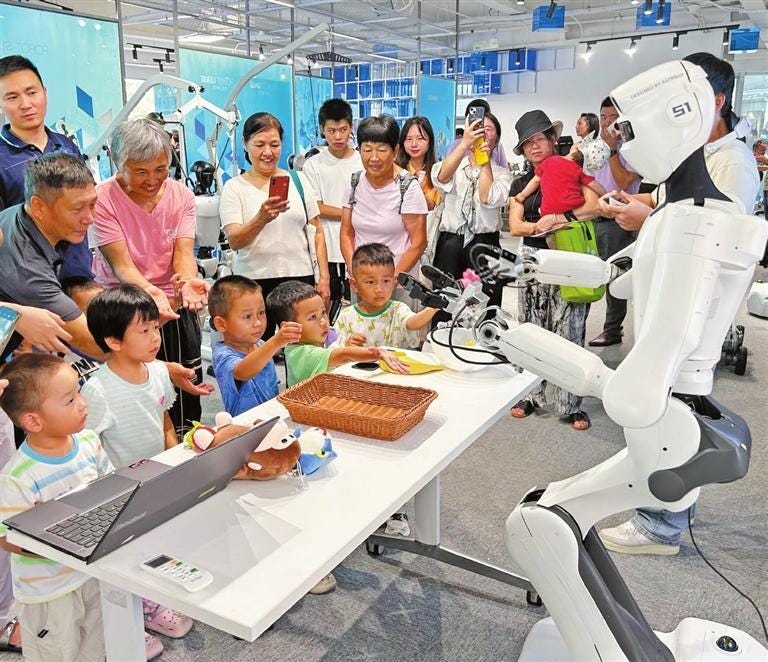
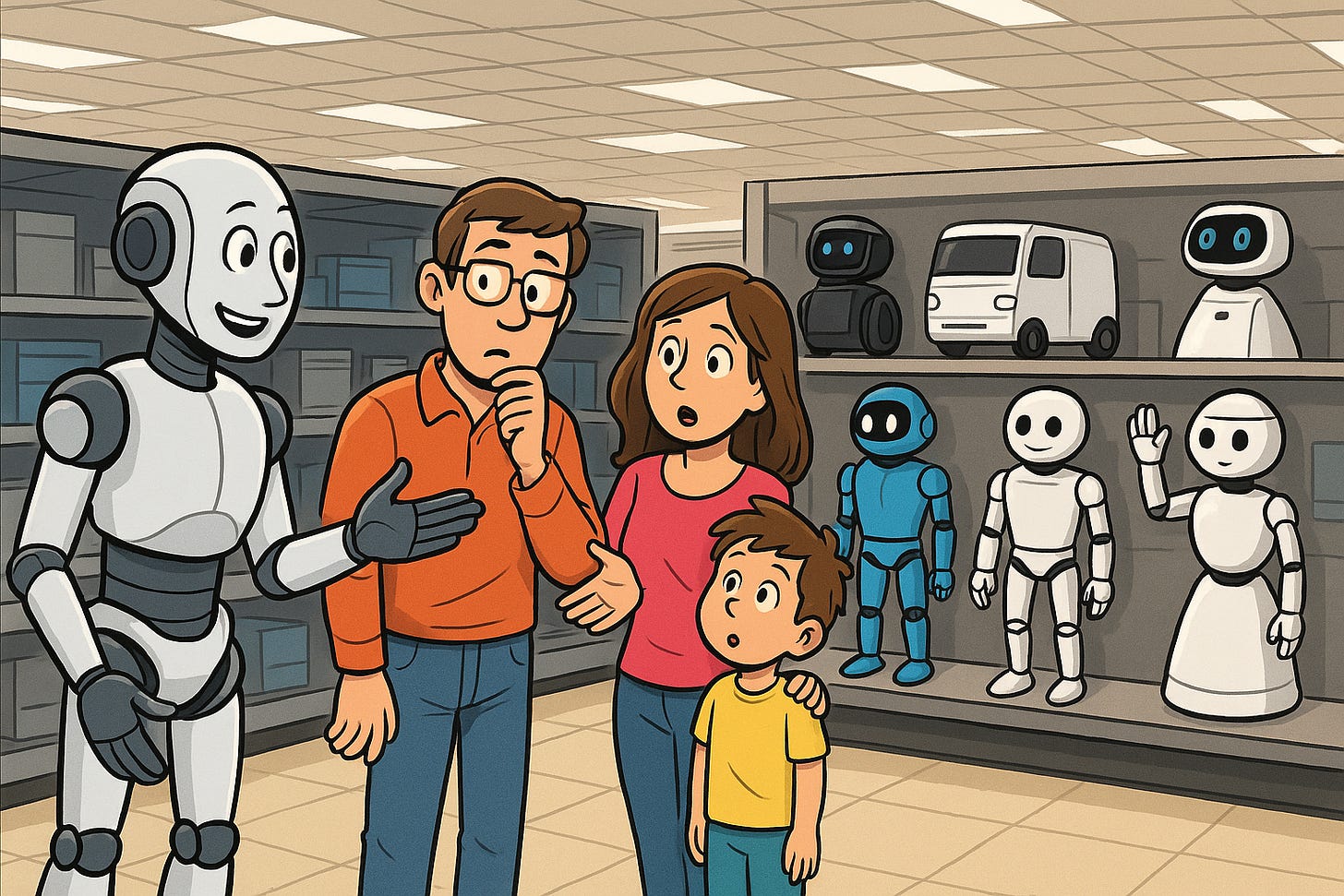
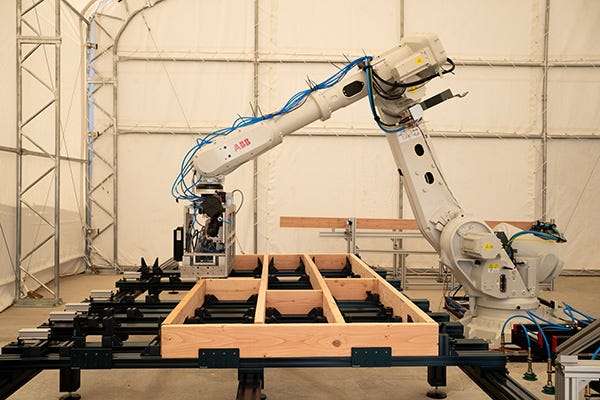
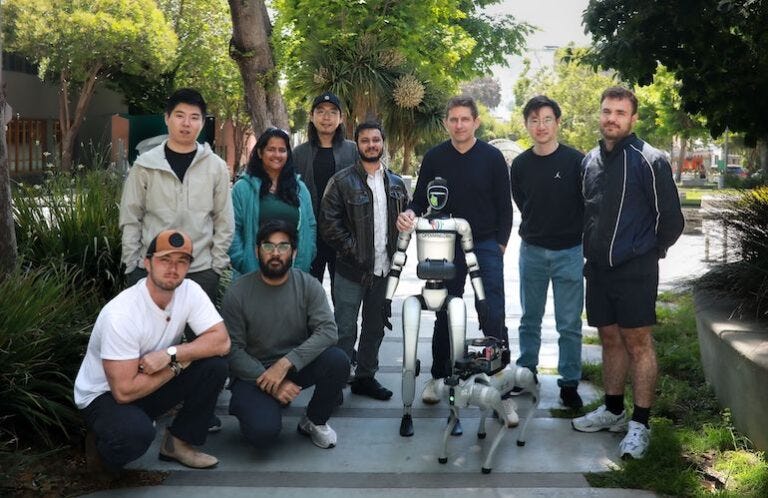
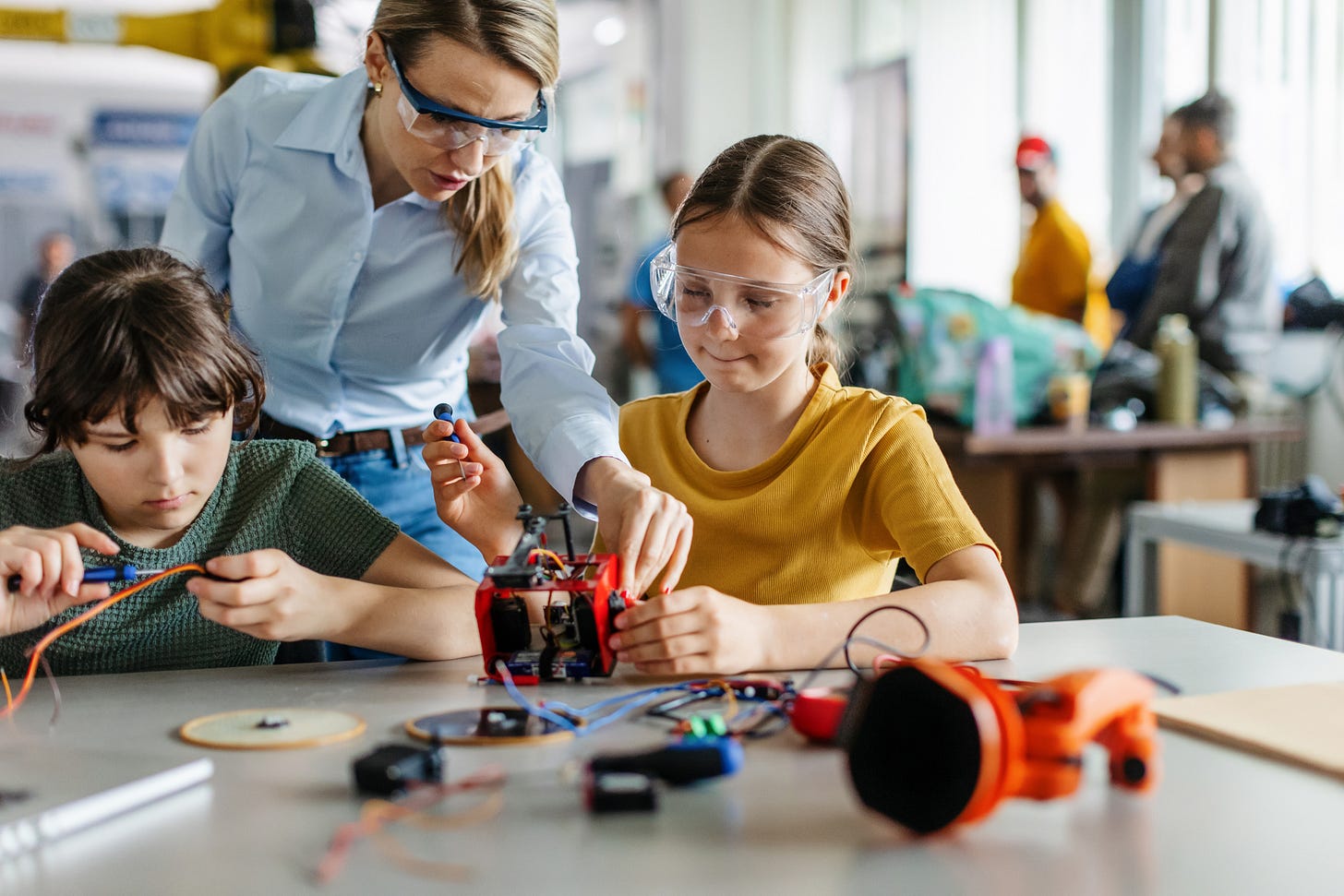
Hi Aaron, I was wondering if you would be interested in participating in our research about the future of AI in Creative Industries? Would be really keen to hear your perspectives. It only takes 10mins and I am sure you will find it interesting.
https://form.typeform.com/to/EZlPfCGm